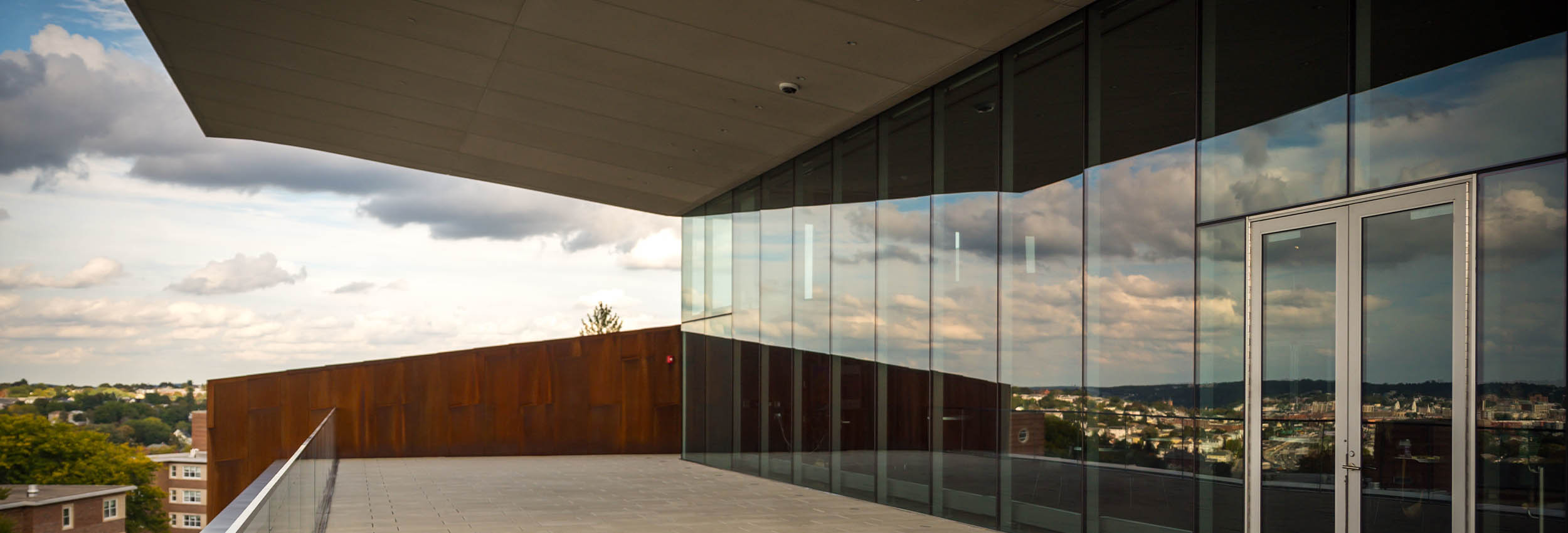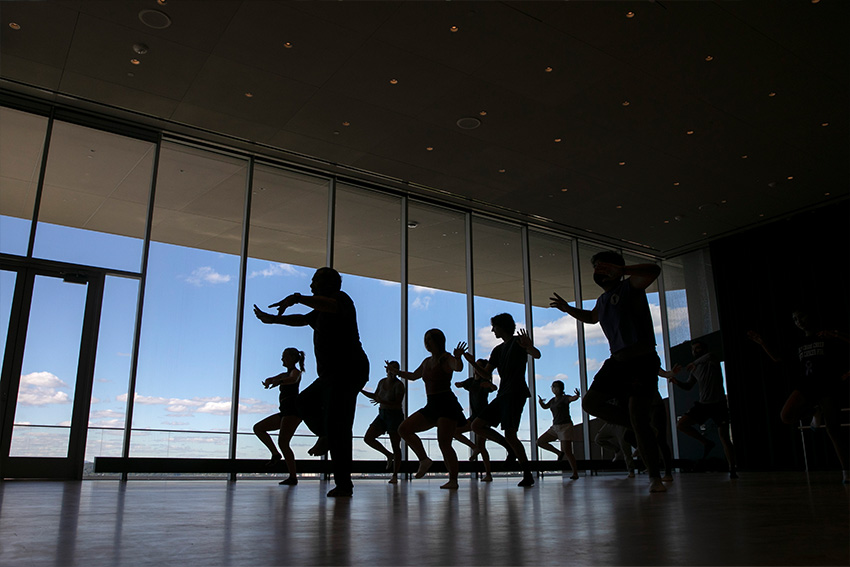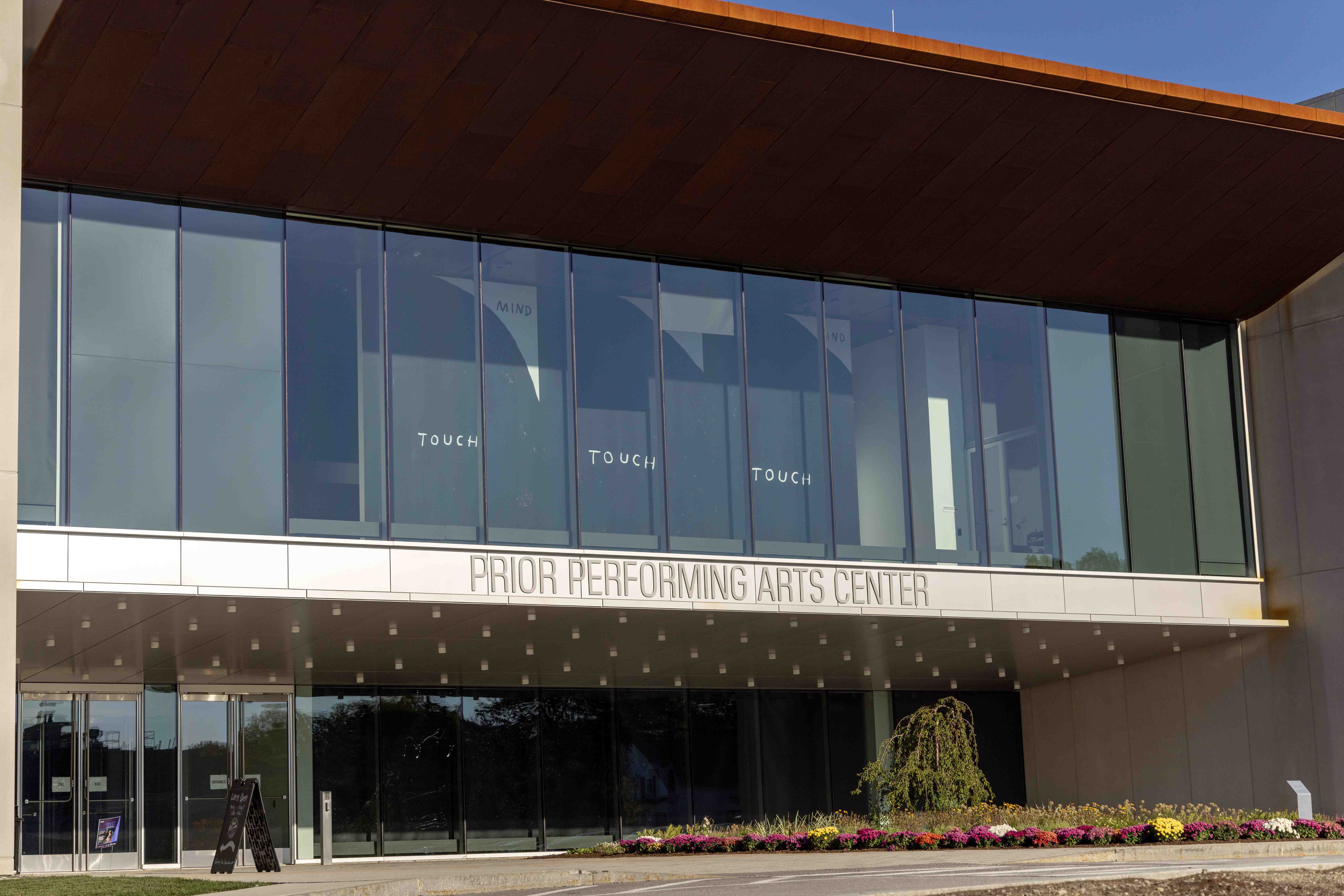Cantor Window Exhibition
Christine Sun Kim (b. 1980, active Berlin, Germany), Mind Touch Touch Touch, 2025, digital print of charcoal drawing
Courtesy of the artist, François Ghebaly, Los Angeles and New York, and WHITE SPACE, Beijing.
Repetition and iteration define Christine Sun Kim’s work, which distinctly incorporates the visual representation of sign language. This mural was made exclusively for the Cantor’s front window and comes from a body of work that combines text and graphic representations of signs in American Sign Language (ASL). Here, Kim depicts the arc of the hand movement in the sign obsess, which is a compound formed by the signs for mind and touch. Through her practice, Kim foregrounds Deaf culture; explores the relationship between sound, language, and image; and explores the social politics of communication.
Christine Sun Kim joins the 2025-26 Prior Presents Visiting Artist Series in a February 19 co-presentation with the Holy Cross Department of Visual Arts. CLICK HERE for a video of obsess being signed in ASL.












